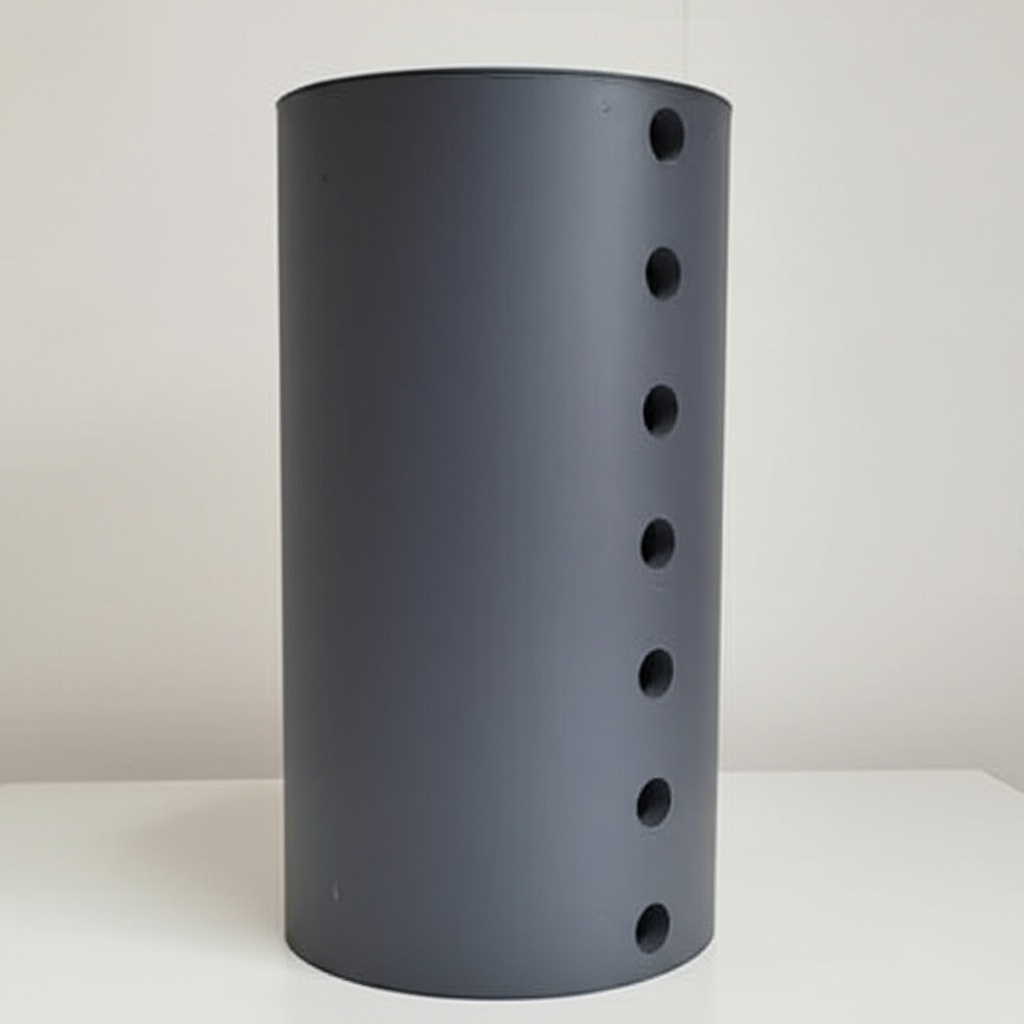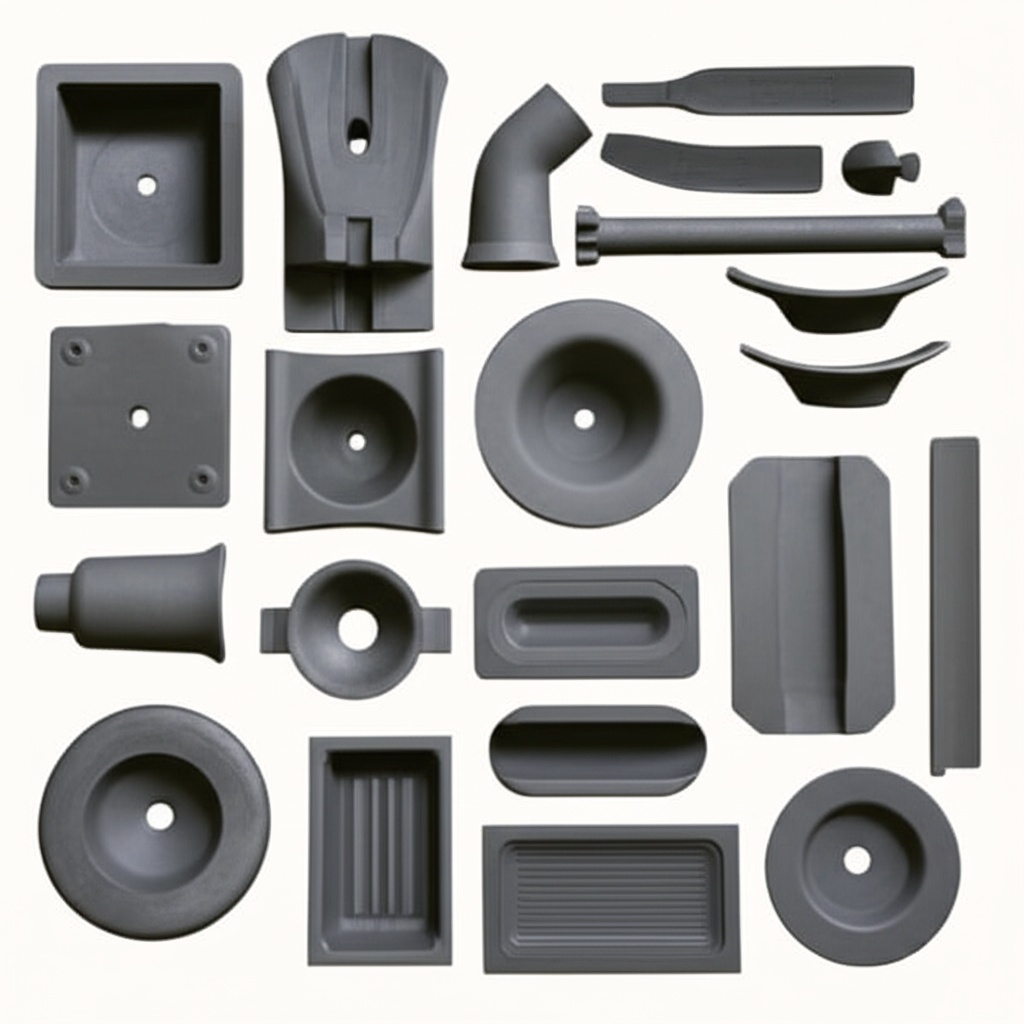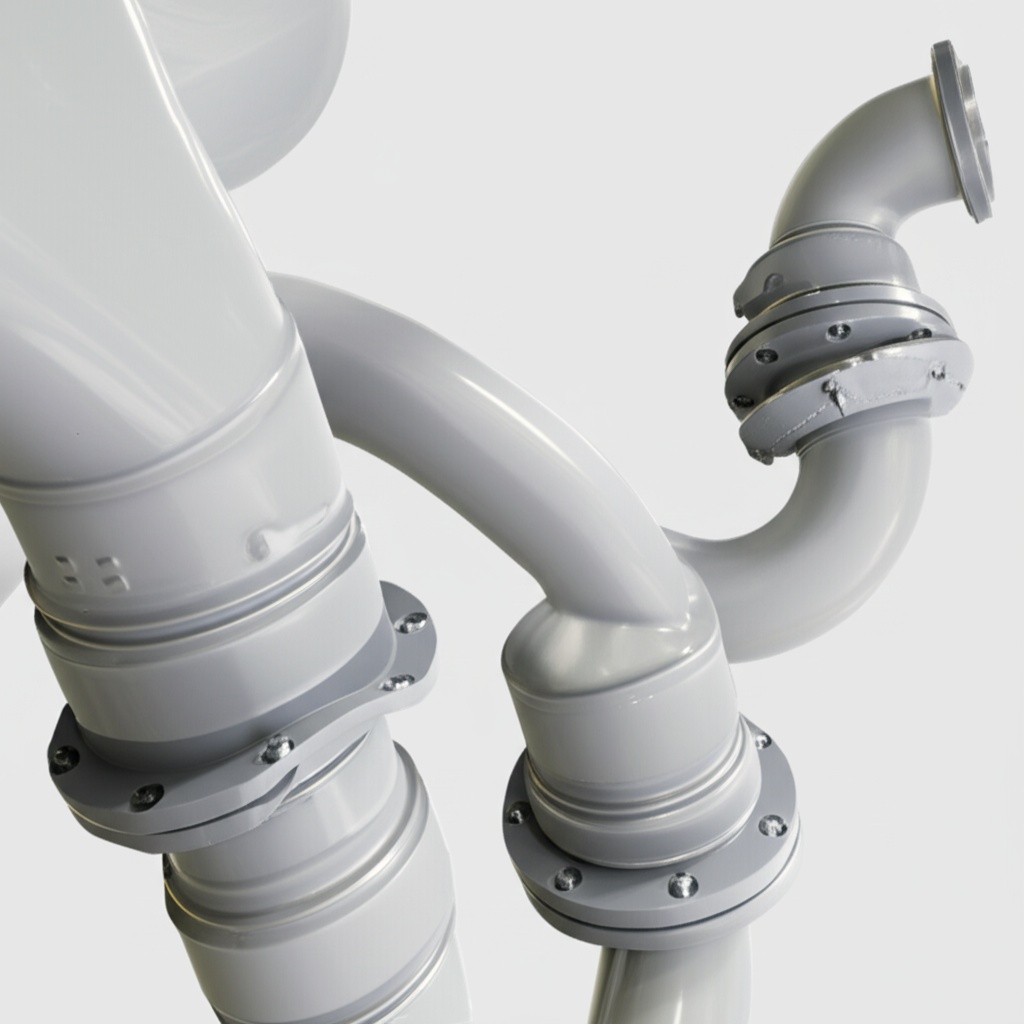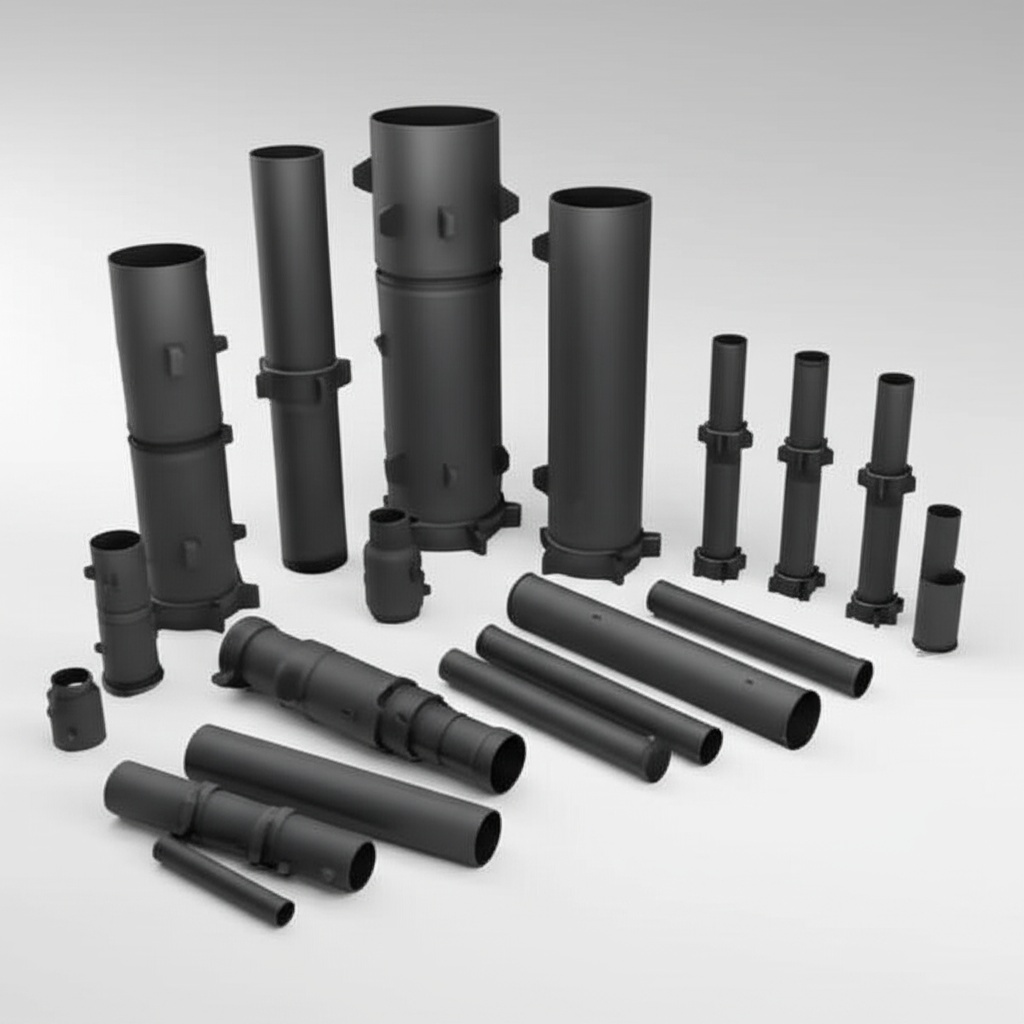Compact & Efficient SiC Power Modules

Share
Compact & Efficient SiC Power Modules: Revolutionizing High-Performance Industries
The relentless pursuit of higher efficiency, increased power density, and superior thermal performance in electronic systems has led to a paradigm shift in semiconductor technology. At the forefront of this evolution are Silicon Carbide (SiC) power modules. These advanced components are no longer a niche technology but a cornerstone for innovation across demanding sectors like automotive, renewable energy, aerospace, and industrial manufacturing. This blog post delves into the transformative capabilities of custom SiC power modules, guiding engineers, procurement managers, and technical buyers in harnessing their full potential.
The Ascendance of Silicon Carbide in Modern Power Electronics
For decades, traditional silicon (Si) has been the workhorse of the power electronics industry. However, as performance demands escalate, silicon’s inherent material limitations—particularly in terms of breakdown voltage, switching frequency, and thermal conductivity—are becoming increasingly apparent. Silicon Carbide, a wide bandgap semiconductor, decisively overcomes these limitations. Its superior material properties allow for the development of power modules that operate at higher voltages, temperatures, and frequencies with significantly lower losses. This translates directly into more compact, lighter, and more efficient power conversion systems, a critical advantage in today’s technology-driven landscape. The transition to SiC is not merely an upgrade; it’s a fundamental enabler for next-generation power electronics.
- Higher Breakdown Electric Field: Approximately 10 times that of silicon, enabling thinner drift layers and lower on-resistance for a given voltage rating.
- Higher Thermal Conductivity: Nearly 3 times better than silicon, facilitating more effective heat dissipation and reliability at elevated temperatures.
- Wider Bandgap Energy: Around 3 times that of silicon, allowing for higher operating temperatures and reduced leakage currents.
Key Applications Driving the Demand for SiC Power Modules
The unique advantages of SiC power modules have spurred their adoption across a diverse range of high-stakes industries. Each sector benefits from the enhanced efficiency, power density, and reliability that SiC offers:
| Industry | Specific Applications | Key Benefits Realized with SiC |
|---|---|---|
| Automotive | Electric vehicle (EV) traction inverters, on-board chargers (OBCs), DC-DC converters | Increased driving range, faster charging, reduced vehicle weight and volume |
| Renewable Energy | Solar inverters, wind turbine converters, energy storage systems | Higher conversion efficiency, improved grid stability, more compact installations |
| Industrial Manufacturing | High-power motor drives, induction heating systems, welding equipment, uninterruptible power supplies (UPS) | Energy savings, enhanced process control, reduced equipment footprint |
| Aerospace & Defense | Actuation systems, power distribution units, radar systems | Weight reduction, improved reliability in harsh environments, higher power density for compact systems |
| Power Electronics | Switched-mode power supplies (SMPS), variable frequency drives (VFDs) | Increased efficiency, higher switching frequencies leading to smaller passive components |
| Rail Transportation | Traction converters, auxiliary power units | Energy efficiency, system size and weight reduction, improved reliability |
| Telecommunications | Power supplies for base stations and data centers | Reduced energy consumption, smaller footprint, improved thermal management |
| Oil and Gas | Downhole drilling equipment, power supplies for remote operations | High-temperature operation capability, enhanced reliability in harsh conditions |
This widespread adoption underscores the transformative impact of SiC technology, paving the way for more efficient and robust electronic systems globally.
Unlocking Peak Performance: The Advantages of Custom SiC Power Modules
While standard SiC power modules offer significant benefits, custom-designed solutions unlock a new echelon of performance tailored to specific application needs. Customization allows for the optimization of electrical, thermal, and mechanical characteristics, ensuring that the module integrates seamlessly and performs optimally within the target system. The primary advantages include:
- Optimized Thermal Management: Custom baseplates, substrate materials (e.g., AlN, Si3N4), and TIMs (Thermal Interface Materials) can be selected to minimize thermal resistance and maximize heat dissipation, critical for high-power density applications.
- Enhanced Electrical Performance: Layout optimization for minimal stray inductance and capacitance, tailored gate drive circuits, and specific SiC die selection (MOSFETs, Schottky diodes) to achieve desired switching characteristics and efficiency.
- Application-Specific Form Factors: Custom housing dimensions, terminal configurations, and mounting options to meet unique space constraints and integration requirements.
- Increased Power Density: By optimizing every aspect of the module design, custom solutions can pack more power into a smaller, lighter package.
- Improved Reliability and Lifespan: Designs can incorporate specific protective features and select materials known for their durability under particular operating conditions (e.g., high humidity, vibration, extreme temperatures).
- System Cost Reduction: Although custom modules may have a higher unit cost, the system-level benefits—such as reduced cooling requirements, smaller passive components, and improved overall efficiency—can lead to a lower total cost of ownership.
Partnering with a specialist in custom SiC solutions ensures that these advantages are fully realized, translating into a competitive edge for your products.
Essential Silicon Carbide Material Grades for Power Modules
The performance of a SiC power module is intrinsically linked to the quality and type of the SiC material used for its active components—primarily MOSFETs and diodes. While various polytypes of SiC exist, 4H-SiC is the most prevalent for power electronics due to its superior electron mobility compared to other polytypes like 6H-SiC. Key considerations for SiC materials in power modules include:
- Wafer Quality: High-quality SiC wafers with low defect densities (e.g., micropipes, basal plane dislocations) are crucial for fabricating reliable devices with high yields. Defect reduction has been a major focus of SiC manufacturing advancements.
- Epitaxial Layer Thickness and Doping: The characteristics of the epitaxial layer grown on the SiC substrate determine the device’s voltage rating and on-resistance. Precise control over thickness and doping concentration is vital.
- Gate Oxide Integrity (for MOSFETs): The interface between the SiC material and the gate oxide (typically SiO2) is critical for the long-term reliability and performance of SiC MOSFETs. Advances in gate oxide processing have significantly improved device stability.
- Substrate Type: N-type substrates are commonly used for vertical power devices. The choice between different conductivity grades impacts device characteristics.
Procurement professionals should seek suppliers who can demonstrate rigorous material qualification processes and traceability, ensuring the use of high-grade SiC optimized for power applications.
Critical Design Considerations for Custom SiC Power Modules
Designing custom SiC power modules requires a holistic approach, considering electrical, thermal, and mechanical aspects to achieve optimal performance and reliability. Engineers must address several critical factors:
- SiC Device Selection: Choosing the appropriate SiC MOSFETs and/or Schottky diodes based on voltage rating, current capability, on-resistance (RDS(on)), and switching characteristics (Eon, Eoff).
- Gate Driver Design: SiC MOSFETs require specific gate driving conditions (e.g., recommended gate voltage, negative turn-off voltage for some devices) to ensure fast and reliable switching while avoiding issues like parasitic turn-on. Integrated or closely coupled gate drivers are often preferred.
- Layout and Parasitic Management: Minimizing stray inductance and capacitance within the module is crucial for high-speed switching. Symmetrical layouts and careful placement of components can reduce voltage overshoots and ringing. Power loop inductance is a key parameter to control.
- Thermal Stack Optimization: Selecting the right combination of Direct Bonded Copper (DBC) or Active Metal Brazed (AMB) substrates (e.g., Al2O3, AlN, Si3N4), baseplate material (e.g., Cu, AlSiC), and thermal interface materials (TIMs) to ensure efficient heat extraction from the SiC dies.
- Interconnect Technologies: Utilizing robust interconnects like heavy wire bonds, copper clips, or sintered silver for die attach and terminal connections to handle high currents and improve thermal performance and reliability.
- Encapsulation and Housing: Choosing appropriate molding compounds or potting materials that offer good thermal conductivity, high dielectric strength, and protection against environmental factors. The housing design must also consider electrical isolation and mechanical robustness.
- Isolation Requirements: Ensuring adequate creepage and clearance distances for the specified operating voltage and safety standards.
- Sensor Integration: Incorporating temperature sensors (e.g., NTCs) or current sensors for monitoring and protection.
A meticulous design process, often involving advanced simulation tools for thermal and electromagnetic analysis, is fundamental to leveraging the full capabilities of SiC technology.
Achieving Precision: Tolerances, Surface Finish, and Packaging in SiC Modules
The manufacturing of SiC power modules demands high precision at every stage, from SiC wafer processing to final module assembly. Tight control over tolerances, surface finishes, and packaging techniques is essential for ensuring performance, reliability, and longevity.
- SiC Wafer Fabrication: This involves precise control of crystal growth, epitaxy, ion implantation, etching, and metallization processes. Surface roughness of the SiC die affects the quality of die attach and electrical contacts.
- Substrate Manufacturing: DBC or AMB substrates require precise ceramic thickness, copper layer thickness, and patterning. Surface planarity and roughness are critical for effective TIM application and thermal transfer.
- Die Attach and Wire Bonding:
- Die Attach: Uniformity of the solder or sinter layer is crucial for void-free attachment, ensuring good thermal and electrical conductivity. Precise placement of the die is also important.
- Wire Bonding: Control over loop height, wire pull strength, and bond placement is necessary to prevent shorts, manage current density, and ensure mechanical integrity under thermal cycling.
- Encapsulation and Sealing: The molding or potting process must ensure complete coverage without voids, particularly around sensitive areas like wire bonds and die surfaces. Dimensional stability of the encapsulant is key.
- Terminal and Housing Tolerances: Precise dimensions of terminals and housing ensure proper fit and connection within the larger system. Flatness of the baseplate is critical for optimal contact with the heatsink.
High-quality packaging not only protects the delicate SiC components but also plays a crucial role in the module’s thermal and electrical performance. Manufacturers with advanced assembly and quality control processes are better equipped to deliver modules that meet stringent specifications.
Enhancing Reliability: Post-Processing and Rigorous Testing of SiC Power Modules
Ensuring the long-term reliability of SiC power modules involves meticulous post-processing steps and comprehensive testing protocols. These measures verify the integrity of the manufacturing process and the robustness of the module design, especially given the high-stress conditions (high voltage, high temperature, fast switching) under which SiC devices operate.
Key Post-Processing Steps:
- Conformal Coating (optional): Application of a thin polymeric film to protect sensitive areas from moisture, dust, and contaminants, enhancing dielectric strength.
- Terminal Finishing: Plating or treatment of terminals to ensure good solderability or contact resistance.
- Final Cleaning: Removing any residues from the manufacturing process.
Comprehensive Testing Regimen:
- Static Parameter Testing:
- Gate threshold voltage (VGS(th))
- On-state resistance (RDS(on))
- Leakage currents (IGSS, IDSS)
- Breakdown voltage (VBR(DSS))
- Diode forward voltage (VF)
- Dynamic Parameter Testing:
- Switching times (td(on), tr, td(off), tf)
- Switching energies (Eon, Eoff, Err)
- Isolation Testing: High-voltage hipot test to verify insulation integrity between terminals and baseplate.
- Thermal Testing: Measurement of thermal resistance (Rth(j-c)) to ensure effective heat dissipation. Thermal cycling tests to assess reliability under temperature fluctuations.
- Reliability Testing (often performed on a sample basis or for qualification):
- High-Temperature Reverse Bias (HTRB)
- High-Temperature Gate Bias (HTGB)
- Power Cycling
- Humidity Testing (e.g., H3TRB – High Humidity, High Temperature, Reverse Bias)
- Mechanical Shock and Vibration Testing
- Acoustic Microscopy (SAM): To detect voids in solder layers or delamination in the substrate or encapsulant.
- X-Ray Inspection: To inspect internal structures like wire bonds and die attach.
Suppliers committed to rigorous quality assurance, including extensive testing, provide greater confidence in the reliability and performance consistency of their SiC power modules.
Navigating Common Challenges in SiC Power Module Adoption and Manufacturing
Despite the compelling advantages of SiC technology, several challenges can arise during the adoption and manufacturing of SiC power modules. Understanding and proactively addressing these can smooth the transition and ensure successful implementation.
Common Challenges for Adopters:
- Higher Initial Cost: SiC devices and modules generally have a higher upfront cost compared to their silicon counterparts, although system-level cost savings can offset this.
- Gate Driver Complexity: SiC MOSFETs have unique gate drive requirements (e.g., specific voltage levels, faster dV/dt and dI/dt) that necessitate careful driver design to maximize performance and prevent issues like ringing or shoot-through.
- EMI/EMC Management: The fast switching speeds of SiC devices can generate higher levels of electromagnetic interference (EMI), requiring careful layout, shielding, and filtering.
- Short-Circuit Withstand Time: Some SiC MOSFETs may have a shorter short-circuit withstand time compared to Si IGBTs, requiring faster protection circuits.
- Supply Chain Maturity and Availability: While rapidly improving, the SiC supply chain is still less mature than that for silicon. Ensuring a reliable supply of high-quality SiC components is crucial.
Common Challenges in Manufacturing:
- SiC Wafer Defectivity: Reducing crystallographic defects in SiC substrates and epitaxial layers is critical for yield and device reliability.
- Gate Oxide Reliability: The SiO2/SiC interface in MOSFETs has historically been a reliability concern, though significant advancements have been made.
- Packaging for High Thermal and Electrical Stress: Developing packaging solutions that can withstand high operating temperatures, high voltages, and fast switching transients without degradation is complex. This includes minimizing parasitic inductance and ensuring robust thermal management.
- Consistent Die Attach and Interconnection: Achieving void-free, high-reliability die attach (e.g., with silver sintering) and robust wire bonds or clip bonding suitable for high temperatures and currents.
- Testing Complexity: The high-speed and high-voltage nature of SiC devices can make comprehensive testing more challenging.
Overcoming these challenges requires expertise in SiC device physics, advanced packaging technologies, and rigorous manufacturing process control. Collaborating with experienced partners can help mitigate these risks.
Choosing Your Partner: Selecting a SiC Supplier & The Weifang Advantage with Sicarb Tech
Selecting the right supplier for custom SiC power modules is a critical decision that directly impacts product performance, reliability, and time-to-market. Beyond standard product offerings, look for a partner with deep technical expertise, robust manufacturing capabilities, and a commitment to quality. When considering global supply chains, it’s noteworthy that the hub of China’s silicon carbide customizable parts manufacturing is situated in Weifang City of China. This region boasts over 40 SiC production enterprises, accounting for more than 80% of China’s total SiC output.
Within this dynamic ecosystem, Sicarb Tech stands out. Since 2015, we have been instrumental in introducing and implementing advanced SiC production technology, significantly contributing to the local industry’s large-scale production capabilities and technological progress. As part of the Chinese Academy of Sciences (Weifang) Innovation Park, an entrepreneurial park closely collaborating with the National Technology Transfer Center of the Chinese Academy of Sciences , SicSino leverages the immense scientific and technological strength and talent pool of the Chinese Academy of Sciences. This backing ensures a foundation of innovation and reliability.
Key criteria for selecting your SiC power module supplier:
- Technical Expertise & Customization Capabilities: Does the supplier have a strong R&D team and proven experience in designing and manufacturing custom SiC modules? Can they tailor solutions to your specific electrical, thermal, and mechanical requirements? Sicarb Tech possesses a domestic top-tier professional team specializing in customized production of silicon carbide products. Our support has benefited over 96 local enterprises, showcasing our wide array of technologies in materials, processes, design, and measurement.
- Material Quality and Sourcing: Transparency in SiC material sourcing and stringent quality control for wafers and dies.
- Manufacturing Processes and Quality Control: Advanced assembly techniques, automated processes, and comprehensive testing facilities (as discussed earlier). SicSino’s integrated process from materials to products enables us to meet diverse customization needs, offering higher-quality, cost-competitive custom SiC components.
- Reliability and Qualification Data: Availability of reliability data, qualification reports, and adherence to industry standards (e.g., AEC-Q101 for automotive).
- Supply Chain Robustness: Ability to ensure consistent supply and manage lead times effectively. Our presence in the Weifang SiC hub provides a strong local supply chain advantage.
- Support and Collaboration: Willingness to work closely with your engineering team throughout the design, prototyping, and production phases.
- Technology Transfer Services: For companies looking to establish their own SiC product manufacturing, a partner offering comprehensive technology transfer is invaluable. Sicarb Tech provides technology transfer for professional silicon carbide production, including full-range services (turnkey projects) like factory design, equipment procurement, installation, commissioning, and trial production. This ensures a more effective investment and reliable technology transformation.
By choosing Sicarb Tech, you gain a partner committed to quality, innovation, and your success, whether you need highly customized SiC components or wish to develop your own manufacturing capabilities. Explore our successful case studies to see our capabilities in action.
Understanding Cost Drivers and Lead Time Considerations for Custom SiC Power Modules
The cost and lead time for custom SiC power modules are influenced by several interrelated factors. A clear understanding of these drivers helps in budgeting, planning, and making informed decisions during the procurement process.
Key Cost Drivers:
- SiC Die Cost: This is a primary contributor. Factors include wafer size (larger wafers generally yield more dies at lower cost per die eventually, but initial investment is high), die complexity (e.g., MOSFET vs. diode, current rating, voltage rating), and yield rates. The cost of high-quality SiC substrates and epitaxy remains a significant factor.
- Module Complexity and Design: Intricate designs with multiple dies, complex busbar structures, integrated sensors, or non-standard footprints will generally incur higher design and assembly costs.
- Bill of Materials (BOM):
- Substrate Type: Advanced ceramics like Aluminum Nitride (AlN) or Silicon Nitride (Si3N4) offer better thermal performance but are more expensive than Alumina (Al2O3).
- Baseplate Material: Copper is common, but materials like AlSiC (Aluminum Silicon Carbide) offer better CTE matching to ceramics and lower weight, at a higher cost.
- Interconnect Technology: Silver sintering offers superior thermal and electrical performance and reliability over traditional solder but involves more expensive materials and processing. Copper clip bonding can also add to cost compared to wire bonding.
- Encapsulation Material: High-performance molding compounds with enhanced thermal conductivity or high-temperature resilience can be more costly.
- Testing and Qualification: Extensive testing, particularly for high-reliability applications (e.g., automotive, aerospace), adds to the cost but is crucial for ensuring quality. Custom qualification programs will also impact cost.
- Production Volume: Economies of scale apply; higher volumes typically lead to lower per-unit costs due to amortization of NRE (Non-Recurring Engineering) costs and more efficient manufacturing.
- NRE Costs: Custom designs involve initial NRE costs for design, tooling (e.g., molds, test fixtures), and prototyping.
Lead Time Considerations:
- Design and Prototyping Phase: Custom designs require an initial phase for specification, design, simulation, and prototype fabrication. This can range from a few weeks to several months depending on complexity.
- Component Sourcing: Lead times for critical components like SiC dies, specialized ceramic substrates, or custom housings can significantly impact the overall timeline. Establishing strong supplier relationships is key.
- Manufacturing and Assembly: The actual module assembly, encapsulation, and testing time. This is influenced by the complexity of the module and the efficiency of the manufacturing line.
- Testing and Qualification: Rigorous testing and qualification, especially for new designs or critical applications, can add considerable time.
- Order Volume and Supplier Capacity: Large orders or a supplier operating at full capacity may result in longer lead times.
Engaging with your SiC module supplier early in the design phase can help optimize for cost and lead time. Transparent communication regarding requirements, forecasts, and potential design trade-offs is essential for effective planning. At Sicarb Tech, we work closely with our clients to provide realistic costings and achievable timelines for their custom silicon carbide projects.
Frequently Asked Questions (FAQ) about SiC Power Modules
- Q1: What are the main advantages of SiC power modules over traditional silicon IGBT modules?
- A1: SiC power modules offer several key advantages over silicon (Si) IGBT modules, including:
- Higher Efficiency: Lower switching and conduction losses, leading to less energy waste and reduced heat generation.
- Higher Switching Frequency: Enables smaller passive components (inductors, capacitors), resulting in more compact and lighter systems.
- Higher Operating Temperature: SiC can operate reliably at higher junction temperatures, reducing cooling requirements.
- Higher Breakdown Voltage: Allows for designs with higher voltage ratings or thinner drift regions for lower resistance.
- Improved Power Density: More power can be processed in a smaller volume and weight.
- Q2: Are SiC power modules a direct drop-in replacement for Si IGBT modules?
- A2: Not always. While some SiC modules are designed with pin-compatibility to existing Si IGBT footprints, realizing the full benefits of SiC often requires system-level design changes. SiC MOSFETs, for example, have different gate drive requirements (voltage levels, faster rise/fall times) than Si IGBTs. The faster switching speeds of SiC can also necessitate modifications to the busbar design to minimize parasitic inductance and manage EMI more effectively. It’s best to consult with SiC module experts to optimize your design for SiC technology.
- Q3: What industries benefit most from using custom SiC power modules?
- A3: Industries that demand high efficiency, high power density, and robust performance in challenging environments benefit most. Key sectors include:
- Automotive: For EV traction inverters, on-board chargers, and DC-DC converters to increase range and reduce charging times.
- Renewable Energy: In solar and wind power inverters to boost energy conversion efficiency.
- Industrial Drives: For more efficient and compact motor controls and power supplies.
- Aerospace and Defense: Where weight, size, and reliability are paramount.
- Rail Transportation: For energy-efficient traction and auxiliary power systems.
- Telecommunications and Data Centers: For high-efficiency power supplies reducing operational costs.
Essentially, any application where reducing energy losses, system size, or improving thermal performance is critical can significantly benefit from custom SiC power modules.
- Q4: How does Sicarb Tech ensure the quality of its custom SiC power modules?
- A4: Sicarb Tech ensures quality through a multi-faceted approach. This includes leveraging the strong R&D capabilities of the Chinese Academy of Sciences, employing a top-tier professional team specialized in SiC customization, implementing rigorous material selection and incoming quality control, utilizing advanced manufacturing processes developed through extensive experience, and conducting comprehensive electrical, thermal, and reliability testing on our products. Our integrated approach from material science to final product, coupled with our deep roots in the Weifang SiC manufacturing hub, allows us to deliver high-quality, cost-competitive custom SiC components. We are also

About the Author: Sicarb Tech
We provide clear and reliable insights into silicon carbide materials, component manufacturing, application technologies, and global market trends. Our content reflects industry expertise, practical experience, and a commitment to helping readers understand the evolving SiC landscape.




